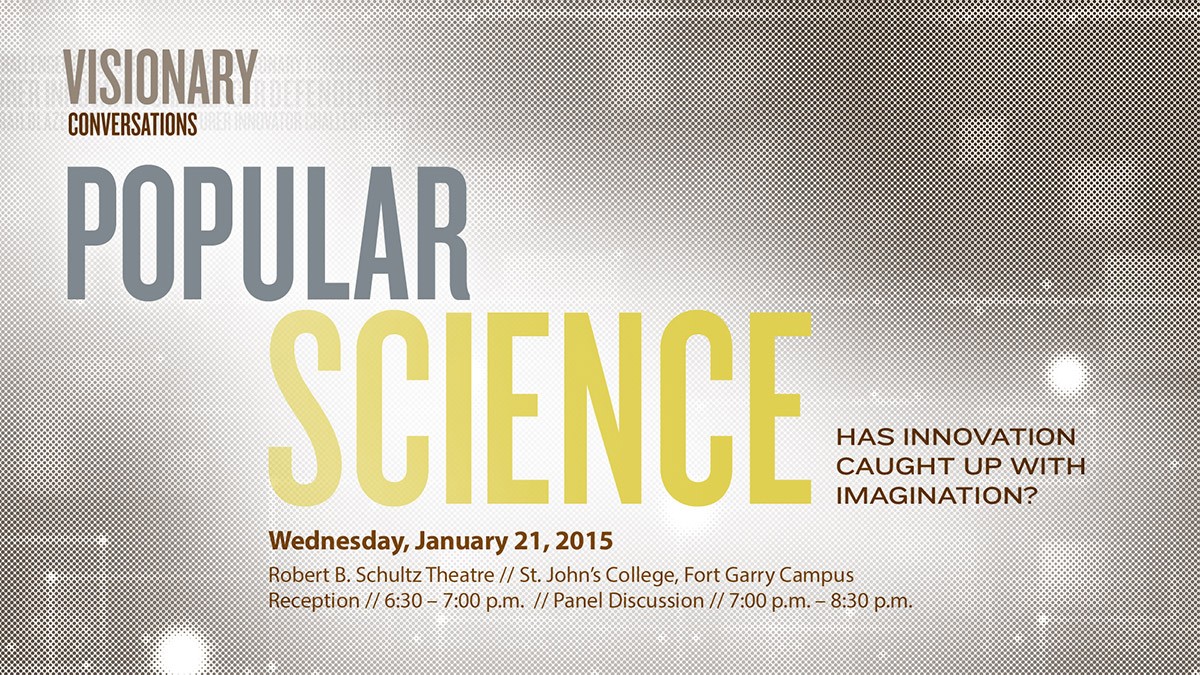
How can public imagination align with scientific innovation?
“Imagination is more important than knowledge. For knowledge is limited to all we now know and understand, while imagination embraces the entire world, and all there ever will be to know and understand.” – Albert Einstein
Has innovation caught up with imagination? Is it possible that modern science, exploration and technology has achieved everything that could be imagined? These questions were tackled at the latest Visionary Conversations titled, “Popular Science” on January 21.
The expert panel included Pourang Irani, professor in the department of computer science, Faculty of Science and Canada Research Chair in ubiquitous analytics, Jayanne English, associate professor in the Faculty of Science’s department of physics and astronomy, and alumnus Scott Young, manager of science communications and visitor experience at the Manitoba Museum.
“Great innovations are the source of inspiration for impactful imaginations,” said Irani. To illustrate this point, Irani shared the story of the cell phone. The mobile phone began as a brick that could make calls, which over time gave rise to new technologies that have become our modern-day smart phones.
“The greatest innovations make our imaginations go wild,” continued Irani. He went on to explain how innovation fuels further imagination (and vice versa).
“Anything that one person can imagine, another can make real.”
– Jules Verne
However, innovations like the mobile phone might be an exception. There is plenty of scientific discover that does not capture the imagination of the public.
English says there is a misalignment between popular imagination and innovator imagination. #umvisionary— U of Manitoba (@umanitoba) January 22, 2015
Jayanne English has experienced this misalignment first-hand; she described the small fraction of astronomical discoveries that actually grab the attention of the public. Many incredible discoveries do not go beyond the scientific community. English explained that part of being a scientist is the expectation that you are able to make your discoveries accessible. Scott Young’s job is to take those discoveries and make them interesting to the public. “People tend to be drawn to things that are hands-on or interactive,” explained Young. “That is a difficult way to share many types of science.” The hope is that education can help inspire a passion for discovery in an individual. According to Young, passion is the source of imagination, and with mentors and role models, young minds will develop imagination into innovation.
Young: Imagination and innovation are a feedback loop. The two encourage each other. #umvisionary — U of Manitoba (@umanitoba) January 22, 2015
Young described the need for a “renaissance man” (or woman) so that discoveries and innovations can continue to fuel imagination. There is a need for individuals, or teams that are not only scientists, but also entrepreneurs, educators, marketers, and administrators.
Join us for our next Visionary Conversation as our expert panelists discuss happiness on Wednesday, March 4: “Are You Happy Now? The Pursuit of Happiness in the Modern Age.”






